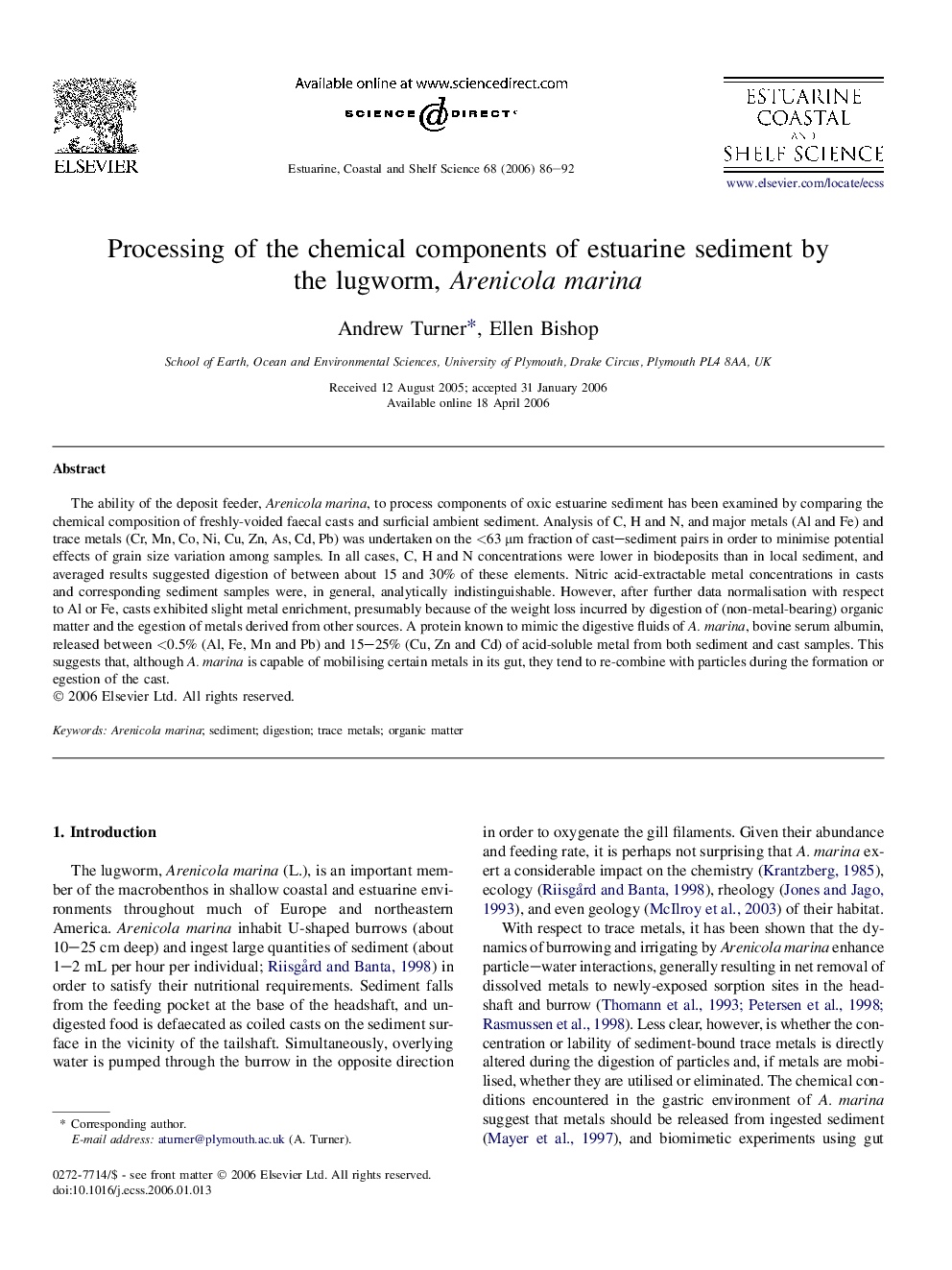| Article ID | Journal | Published Year | Pages | File Type |
|---|---|---|---|---|
| 4542285 | Estuarine, Coastal and Shelf Science | 2006 | 7 Pages |
The ability of the deposit feeder, Arenicola marina, to process components of oxic estuarine sediment has been examined by comparing the chemical composition of freshly-voided faecal casts and surficial ambient sediment. Analysis of C, H and N, and major metals (Al and Fe) and trace metals (Cr, Mn, Co, Ni, Cu, Zn, As, Cd, Pb) was undertaken on the <63 μm fraction of cast–sediment pairs in order to minimise potential effects of grain size variation among samples. In all cases, C, H and N concentrations were lower in biodeposits than in local sediment, and averaged results suggested digestion of between about 15 and 30% of these elements. Nitric acid-extractable metal concentrations in casts and corresponding sediment samples were, in general, analytically indistinguishable. However, after further data normalisation with respect to Al or Fe, casts exhibited slight metal enrichment, presumably because of the weight loss incurred by digestion of (non-metal-bearing) organic matter and the egestion of metals derived from other sources. A protein known to mimic the digestive fluids of A. marina, bovine serum albumin, released between <0.5% (Al, Fe, Mn and Pb) and 15–25% (Cu, Zn and Cd) of acid-soluble metal from both sediment and cast samples. This suggests that, although A. marina is capable of mobilising certain metals in its gut, they tend to re-combine with particles during the formation or egestion of the cast.
